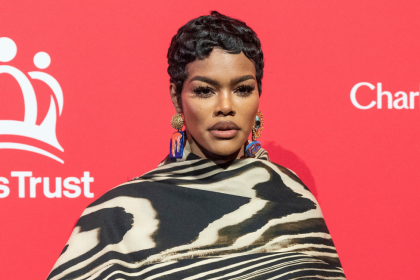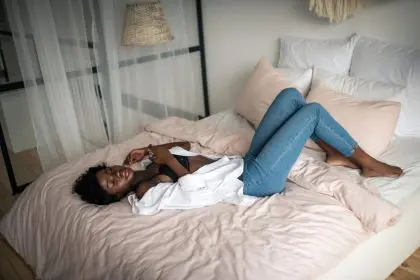You know that sinking feeling when someone asks you to do something and you really want to say no, but the words “of course, I’d love to help” come tumbling out instead? You’re not alone. Most people struggle with saying no because we’ve been taught that it’s selfish or rude. But here’s the truth: learning how to say no without guilt is one of the most important skills you can develop for your mental health and relationships.
The key isn’t becoming mean or uncaring — it’s learning to set boundaries that protect your time and energy while still being kind and respectful.
Understanding why saying no feels so hard
From childhood, many of us learn that saying yes makes people happy and saying no disappoints them. We develop people-pleasing tendencies because we want to be liked and accepted. But this creates a cycle where we overcommit, feel overwhelmed, and then resent the very people we were trying to please.
Women, especially Black women, often face additional pressure to be accommodating and helpful. Society expects us to be strong, nurturing, and always available for others. But constantly saying yes to everyone else means saying no to yourself, your goals, and your well-being.
The guilt you feel when saying no isn’t necessarily about the person asking — it’s about old programming that tells you your worth depends on how useful you are to others.
Reframe your perspective on saying no
Here’s a game-changing mindset shift: saying no to one thing means saying yes to something else. When you decline a request, you’re not being selfish — you’re protecting your ability to show up fully for your priorities, family, and the commitments you’ve already made.
Think of your time and energy as a finite resource. Every yes depletes this resource, and when you’re running on empty, you can’t give your best to anything. Saying no strategically ensures you have enough left to give quality attention to what matters most.
Remember that learning how to say no without guilt actually makes you more reliable, not less. When you only commit to things you can handle well, people know they can count on you to follow through.
Start with simple, honest responses
You don’t need elaborate excuses or justifications for saying no. Simple honesty works better than complicated explanations that invite negotiation. Try phrases like “I can’t commit to that right now” or “That doesn’t work for my schedule.”
Avoid over-explaining because it makes you sound uncertain and gives the other person openings to convince you otherwise. You don’t owe anyone a detailed breakdown of your priorities or circumstances.
Practice these responses: “I’m not available for that,” “I have other commitments,” or “I can’t take that on right now.” Notice how these statements are polite but firm, without room for debate.
Use the sandwich method for softer delivery
When you need to decline someone close to you, try the sandwich method: appreciation, decline, alternative or encouragement. For example: “Thanks for thinking of me for this project. I can’t take it on with my current workload, but I know you’ll do great with it.”
This approach acknowledges the request positively, clearly states your boundary, and ends on a supportive note. It feels less harsh than a flat no while still being definitive.
You can also offer alternatives if you genuinely want to help but can’t commit fully: “I can’t volunteer for the whole event, but I could help with setup for an hour.”
Practice saying no to low-stakes requests
Start building your no-saying muscle with small, low-stakes situations. Decline invitations to events you don’t want to attend, or say no when a store clerk asks if you want to sign up for their rewards program.
These practice opportunities help you get comfortable with the physical sensation of saying no and the brief discomfort that might follow. You’ll discover that most people accept your no without drama, which builds your confidence for bigger situations.
Pay attention to how you feel after saying no to something you didn’t want to do. Most people report feeling relieved and proud rather than guilty once they get past the initial discomfort.
Set boundaries around your decision-making time
You don’t have to answer requests immediately. Give yourself permission to say, “Let me check my schedule and get back to you.” This creates space to consider whether you actually want to commit and helps you avoid reactive yes responses.
Use this time to honestly assess your capacity and interest level. Ask yourself: Do I have the time and energy to do this well? Does this align with my current priorities? Am I saying yes out of guilt or genuine interest?
Having a standard response for buying time — like “I need to check my calendar” — makes it easier to pause instead of automatically agreeing.
Address the guilt directly
When guilt creeps in after saying no, remind yourself that you’re not responsible for other people’s emotions or reactions. You can be kind and still maintain boundaries. The discomfort you feel is temporary, but overcommitting creates lasting stress.
Consider the cost of saying yes when you wanted to say no: resentment, exhaustion, and lower quality performance. These outcomes don’t serve anyone well.
Practice self-compassion when you’re learning this skill. You might slip up and say yes when you meant to say no, and that’s okay. Each situation is practice for the next one.
Learning how to say no without guilt is a form of self-respect that ultimately benefits everyone in your life. When you protect your time and energy, you show up as a better friend, partner, employee, and family member. Your no creates space for someone else’s yes, and your boundaries teach others how to treat you.


















